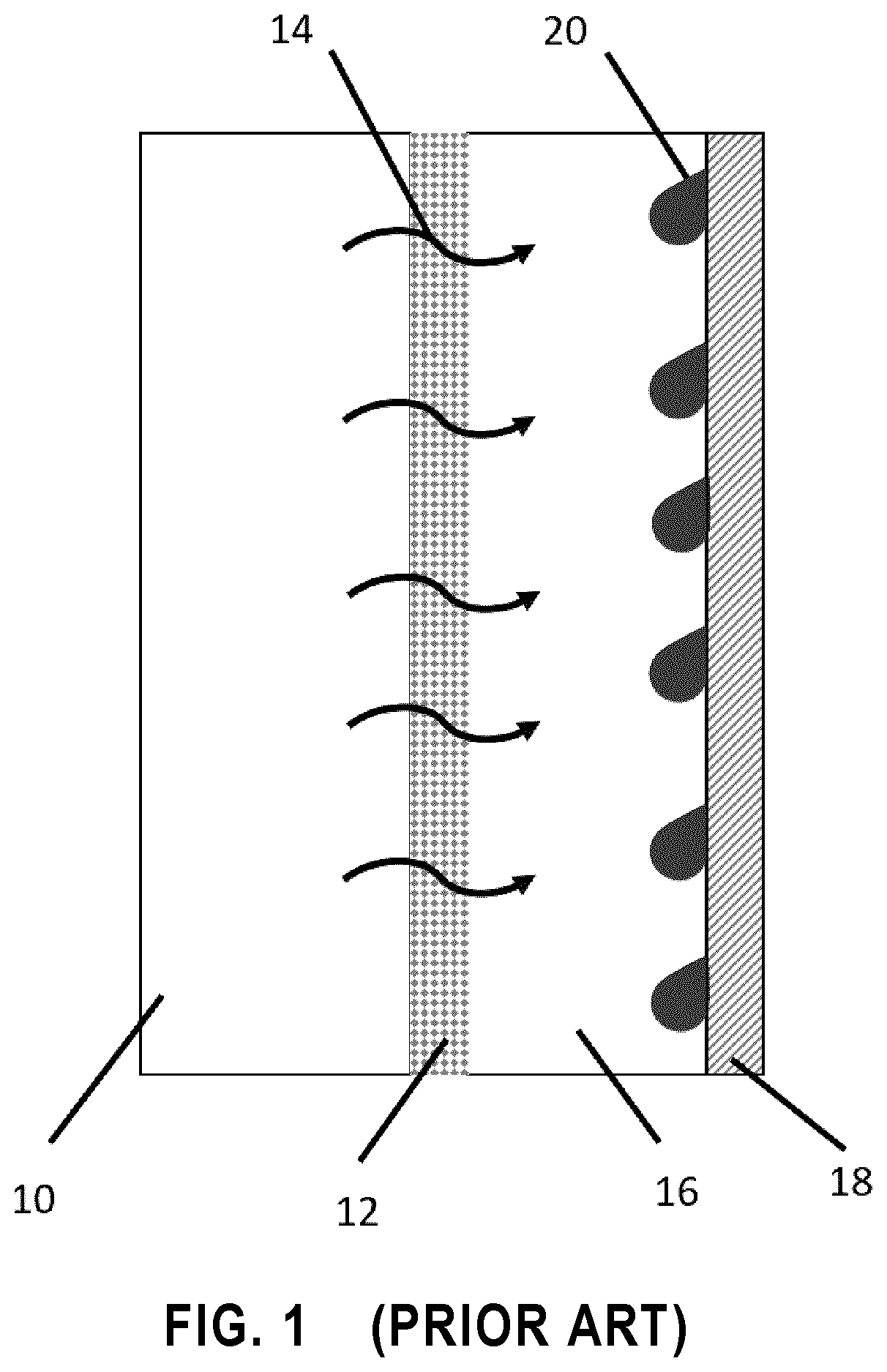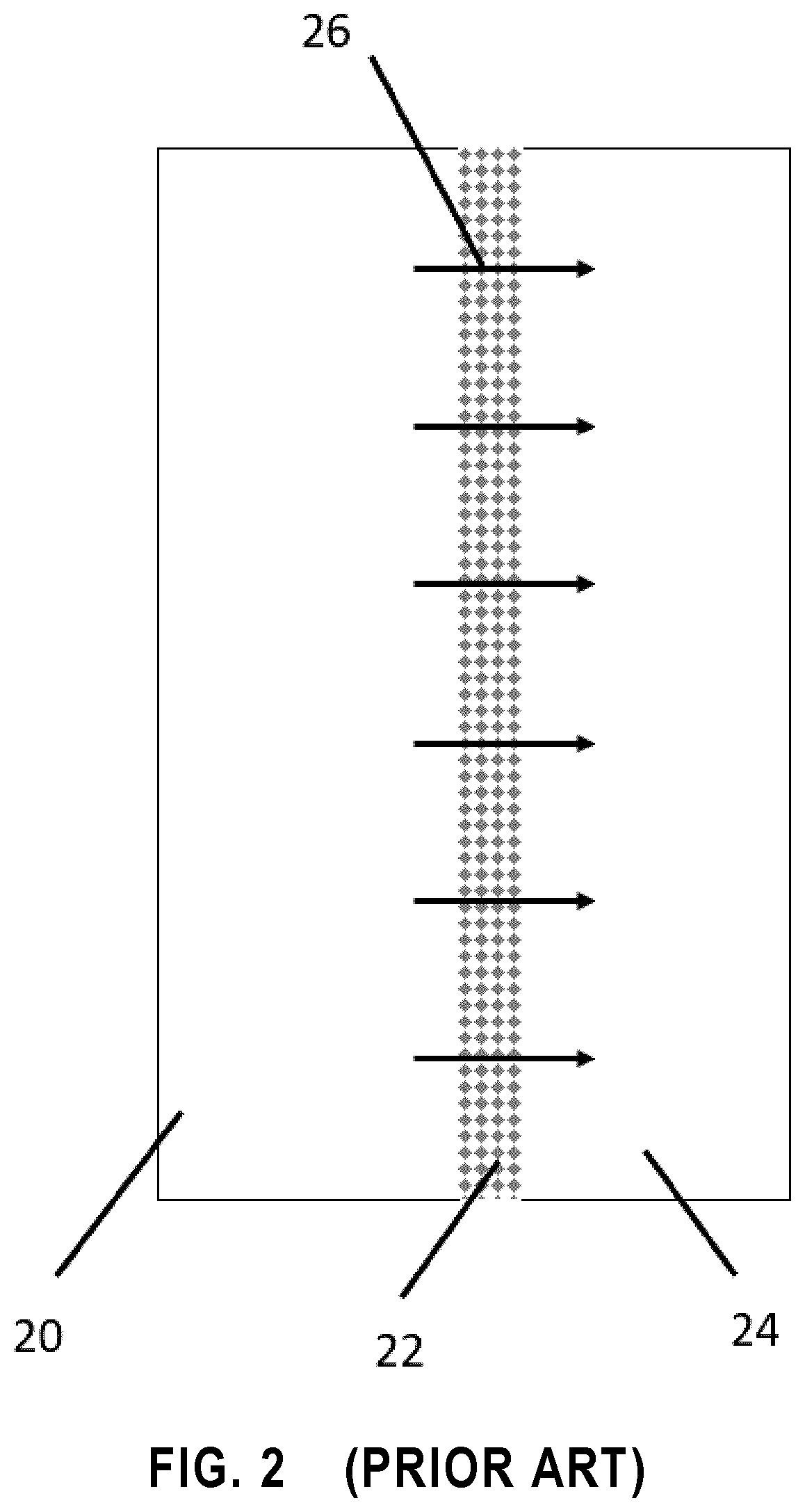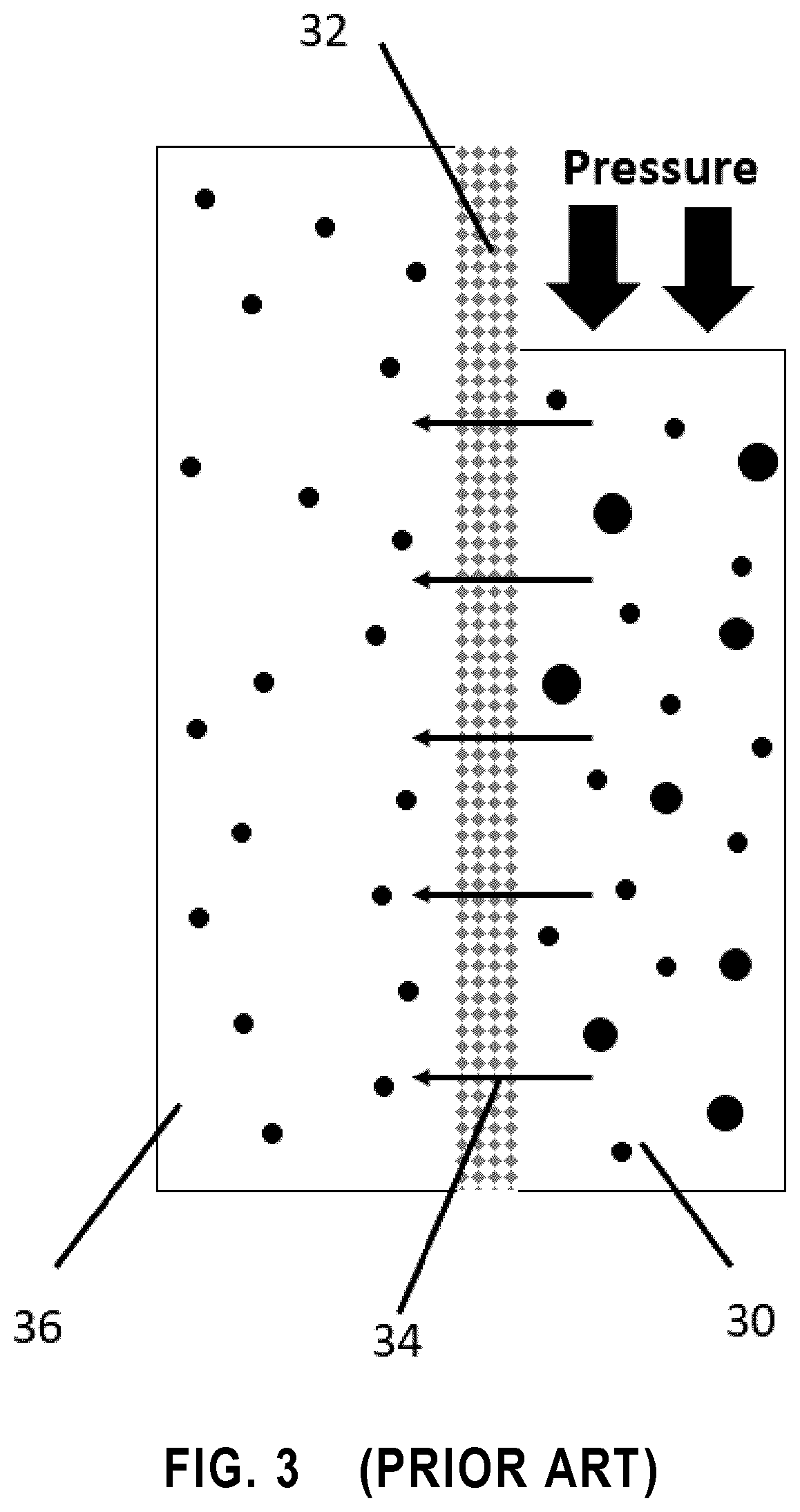Membranes for forward osmosis and membrane distillation and process of treating fracking wastewater
a technology of membrane distillation and forward osmosis, which is applied in the direction of membranes, waste water treatment from quaries, multi-stage water/sewage treatment, etc., can solve the problems of hydraulic fracturing's negative environmental impact, fracturing fluids, and shale gas production through hydraulic fracturing
- Summary
- Abstract
- Description
- Claims
- Application Information
AI Technical Summary
Benefits of technology
Problems solved by technology
Method used
Image
Examples
example 1
Membranes for Membrane Distillation—Reduced Graphene Oxide in Poly (vinylidene fluoride-co-hexafluoropropylene)
[0356]We developed two easy-to-produce superhydrophobic and amphiphobic nanofibrous membranes for membrane distillation. These membranes comprise a nanocomposite of reduced graphene oxide in poly (vinylidene fluoride-co-hexafluoropropylene).
[0357]In fact, two superhydrophobic and amphiphobic membranes, which could repel both water and low surface tension liquids (e.g. oil), were produced by electrospinning followed by surface modification.
[0358]First, highly hydrophobic nanofiber mats were prepared by electrospinning a blend polymer of poly (vinylidene fluoride-co-hexafluoropropylene) (PVDF-HFP) and reduced graphene oxide (rGO). The rGO incorporated membranes exhibited improved stability and durability with satisfactory distillate quality compared with pristine PVDF-HFP membranes.
[0359]Surface superhydrophobicity and amphiphobicity were further increased by grafting a fluor...
example 2
Membranes for Forward Osmosis—Silica Nanoparticle-Containing Thin-Film Composite Membrane
[0433]A high flux and antifouling thin-film composite (TFC) forward osmosis (FO) membrane containing silica (SiO2) nanoparticles was fabricated using a facile electrospinning technique followed by interfacial polymerization on surface of electrospun nanofiber mat. The successful fabrication of the TFC membrane was confirmed via FE-SEM, TEM, XRD, FTIR, and AFM analyses.
[0434]Both the electrospun nylon 6 (N6) substrate and the polyamide (PA) active layer contained superhydrophilic SiO2 nanoparticles enhancing the hydrophilicity of the fabricated FO membrane. The fabricated electrospun N6 / SiO2-supported TFC FO membrane with a PA / SiO2 composite active layer was robust (tensile strength of 22.3 MPa) with a water contact angle of 14°.
[0435]In the FO process, the fabricated TFC membrane exhibited a high water flux (27.10 LMH) with a low specific reverse salt flux (5.9×10−3 mol·L−1). The fabricated memb...
example 3
Combined MF-FO-MD Processes for Fracking Wastewater Treatment
[0521]A combined process, comprised of microfiltration, forward osmosis and membrane distillation was successfully applied to the treatment of fracking wastewater. In fact, both insoluble and soluble contaminants were removed by microfiltration and forward osmosis, respectively. After applying this combined process, fresh water was obtained from the fracking wastewater.
[0522]Microfiltration as a pre-treatment process followed the emerging forward osmosis coupled with membrane distillation—used as a downstream separator to recycle FO draw solutions as well as to produce pure water—as post-treatment processes were successfully applied for the first time to the treatment of fracking wastewater. Microfiltration as a pre-treatment removed ˜52% of TOC and ˜98.5% of turbidity. High average water fluxes (19.98 LMH for NaCl and 30.97 LMH for NaP draw solutions) with high solute rejection were obtained via the FO process using a nan...
PUM
| Property | Measurement | Unit |
|---|---|---|
| porosity | aaaaa | aaaaa |
| temperature | aaaaa | aaaaa |
| temperature | aaaaa | aaaaa |
Abstract
Description
Claims
Application Information
 Login to View More
Login to View More - R&D
- Intellectual Property
- Life Sciences
- Materials
- Tech Scout
- Unparalleled Data Quality
- Higher Quality Content
- 60% Fewer Hallucinations
Browse by: Latest US Patents, China's latest patents, Technical Efficacy Thesaurus, Application Domain, Technology Topic, Popular Technical Reports.
© 2025 PatSnap. All rights reserved.Legal|Privacy policy|Modern Slavery Act Transparency Statement|Sitemap|About US| Contact US: help@patsnap.com



